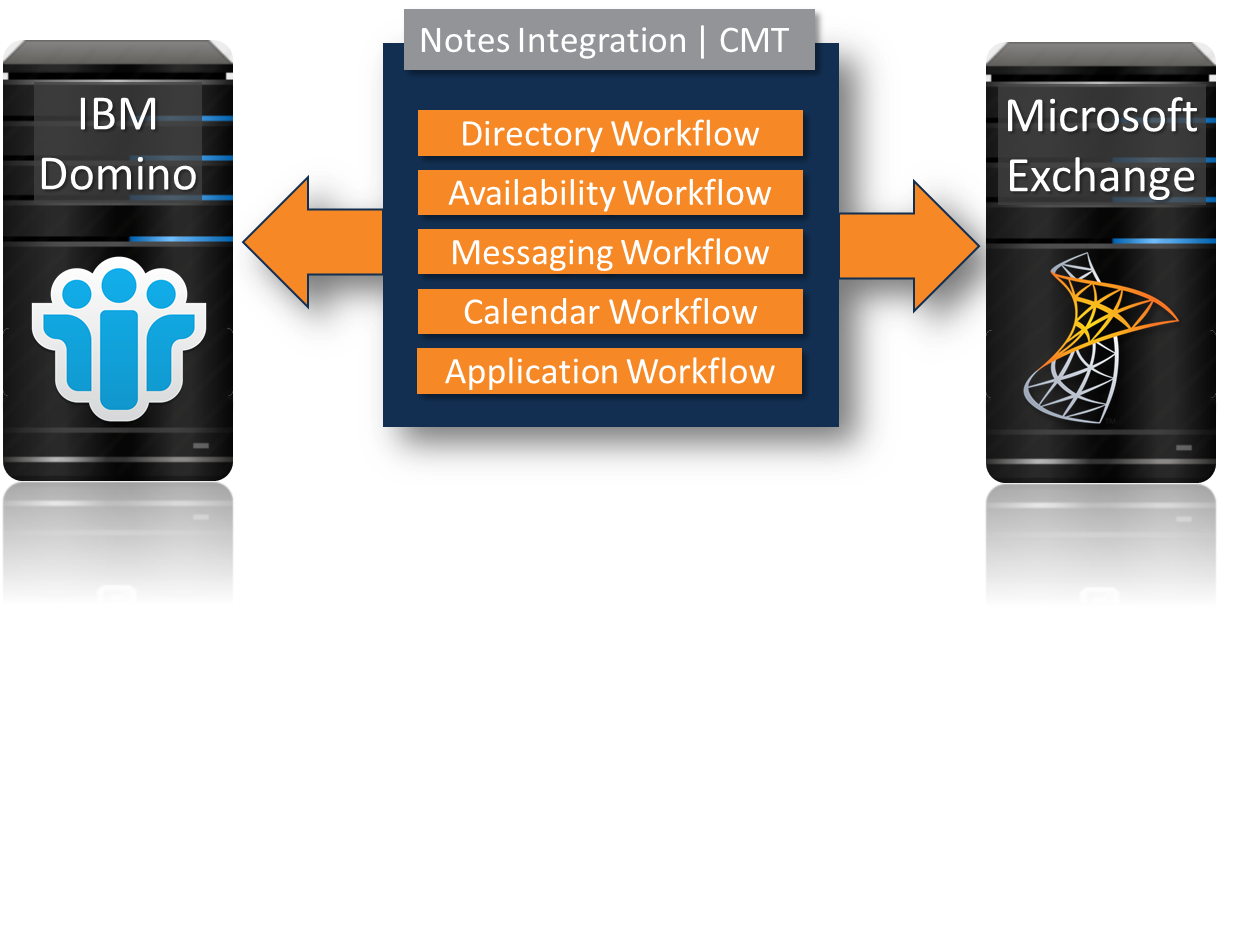Integration for Notes is the full name of the “heart” of Quest’s Binary Tree complete coexistence solution. Integration for Notes itself is made up of several discrete functions which will be referred to throughout this document by their shorter names.
The two primary pieces of Integration for Notes are contained on the Domino coexistence server (messaging and calendaring workflow or “BTCal”) and on the Windows coexistence server (calendar free/busy lookups or “FreeBusy”). When referring to the actual lookup of free and busy time between Domino and Exchange, “free/busy” is used; when referring to the Integration for Notes product, “FreeBusy” is used. Although FreeBusy is part of Integration for Notes, since it requires its own configuration, it has a separate user guide. While this guide touches on the entire coexistence suite of products, it is focused on the BTCal setup.
“Coexistence” (or “Coex”) is used to refer to both the state of interoperability between Domino and Exchange environments, and as the suite of Binary Tree products that create an ideal coex environment—Directory Sync Pro and Integration for Notes.
Integration for Notes is the full name of the “heart” of Quest’s Binary Tree complete coexistence solution. Integration for Notes itself is made up of several discrete functions which will be referred to throughout this document by their shorter names.
The two primary pieces of Integration for Notes are contained on the Domino coexistence server (messaging and calendaring workflow or “BTCal”) and on the Windows coexistence server (calendar free/busy lookups or “FreeBusy”). When referring to the actual lookup of free and busy time between Domino and Exchange, “free/busy” is used; when referring to the Integration for Notes product, “FreeBusy” is used. Although FreeBusy is part of Integration for Notes, since it requires its own configuration, it has a separate user guide. While this guide touches on the entire coexistence suite of products, it is focused on the BTCal setup.
“Coexistence” (or “Coex”) is used to refer to both the state of interoperability between Domino and Exchange environments, and as the suite of Binary Tree products that create an ideal coex environment—Directory Sync Pro and Integration for Notes.
Coexistence is required when multiple messaging environments need to exist together over an extended period of time due to mergers and acquisitions, or during email system migrations. Transparent, highly functional, and stable communication throughout the email environment is mission-critical, making coexistence much more than just a system that ensures email is delivered in a timely fashion.
Coexistence between Domino and Microsoft Exchange is successful if the following criteria are met:
Messages on the destination platform appear exactly the way they appear in the source platform including attachments, rich text, embedded images, and forms
Cross platform calendaring, including free/busy lookups, is functional (see the FreeBusy user guide for additional information)
Email directories are synchronized, allowing transparent access to addressing information (see the Directory Sync Pro for Domino and Active Directory user guide for additional information)
Integration for Notes delivers the highest levels of functionality, stability, and scalability for connection between Microsoft Exchange and Domino. It provides high-fidelity exchange of mail and calendar data. It also intercepts mail and calendar data traveling between the environments, and if necessary, modifies the address and content portions of the message header and body to make coexistence between environments more transparent, functional, and user-friendly. In addition, it preserves user workflow between Domino and Exchange.
“Workflow,” or the flow of data or information between users, applications, or a user and an application is illustrated by the image below, showing the different types of workflow managed in a coexistence environment.

Directory Workflow – Directory Sync Pro, although a separate Binary Tree product, is part of a rich coexistence solution; it is used to establish directory synchronization between the two platforms to make sure that user addressing is transparent and functional regardless of the migration status of the users.
Availability Workflow - Provides for calendar free/busy lookups to ensure that users can obtain schedule availability information for other users regardless of the system users are associated with (see the FreeBusy user guide)
Messaging Workflow - Enables the high-availability, high-performance, and high-fidelity exchange of data that preserves email related workflow, including Notes document and database links
Calendar Workflow - Ensures that corresponding calendar items function correctly between Notes and Outlook users when creating, updating, rescheduling, and cancelling meetings regardless of a user’s migration status (see the FreeBusy user guide)
Application Workflow - Preserves a user’s ability to receive Notes application-originated emails and to perform the actions required by these emails